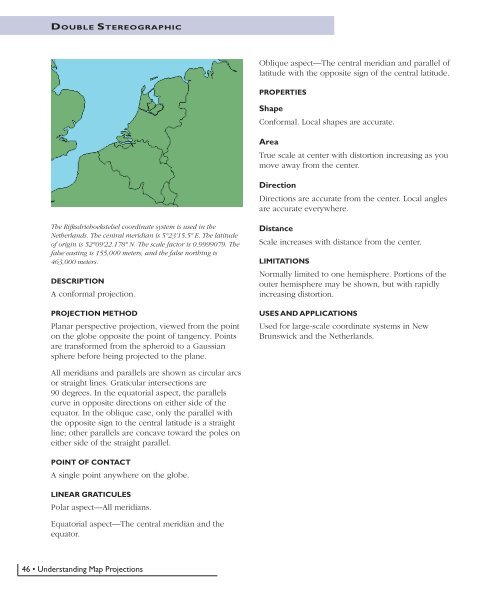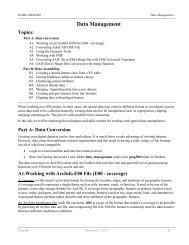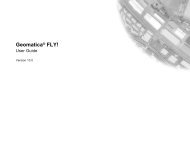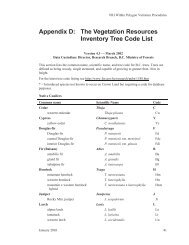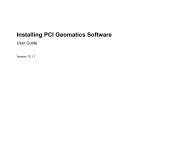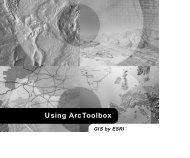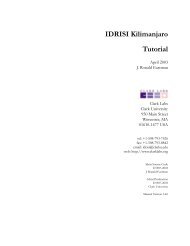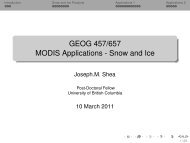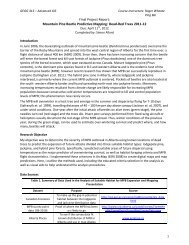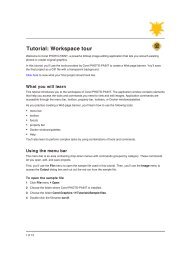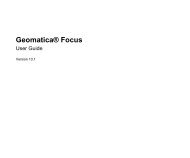Understanding Map Projections
Understanding Map Projections
Understanding Map Projections
Create successful ePaper yourself
Turn your PDF publications into a flip-book with our unique Google optimized e-Paper software.
DOUBLE STEREOGRAPHIC<br />
Oblique aspect—The central meridian and parallel of<br />
latitude with the opposite sign of the central latitude.<br />
PROPERTIES<br />
Shape<br />
Conformal. Local shapes are accurate.<br />
Area<br />
True scale at center with distortion increasing as you<br />
move away from the center.<br />
Direction<br />
Directions are accurate from the center. Local angles<br />
are accurate everywhere.<br />
The Rijksdriehoekstelsel coordinate system is used in the<br />
Netherlands. The central meridian is 5°23'15.5" E. The latitude<br />
of origin is 52°09'22.178" N. The scale factor is 0.9999079. The<br />
false easting is 155,000 meters, and the false northing is<br />
463,000 meters.<br />
DESCRIPTION<br />
A conformal projection.<br />
PROJECTION METHOD<br />
Planar perspective projection, viewed from the point<br />
on the globe opposite the point of tangency. Points<br />
are transformed from the spheroid to a Gaussian<br />
sphere before being projected to the plane.<br />
Distance<br />
Scale increases with distance from the center.<br />
LIMITATIONS<br />
Normally limited to one hemisphere. Portions of the<br />
outer hemisphere may be shown, but with rapidly<br />
increasing distortion.<br />
USES AND APPLICATIONS<br />
Used for large-scale coordinate systems in New<br />
Brunswick and the Netherlands.<br />
All meridians and parallels are shown as circular arcs<br />
or straight lines. Graticular intersections are<br />
90 degrees. In the equatorial aspect, the parallels<br />
curve in opposite directions on either side of the<br />
equator. In the oblique case, only the parallel with<br />
the opposite sign to the central latitude is a straight<br />
line; other parallels are concave toward the poles on<br />
either side of the straight parallel.<br />
POINT OF CONTACT<br />
A single point anywhere on the globe.<br />
LINEAR GRATICULES<br />
Polar aspect—All meridians.<br />
Equatorial aspect—The central meridian and the<br />
equator.<br />
46 • <strong>Understanding</strong> <strong>Map</strong> <strong>Projections</strong>


